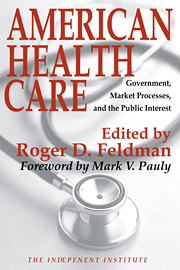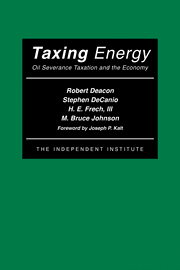Especially during this election year, there is much public comment on the roughly 13 percent of Americans still without health insurance, despite decades of growth in private and public insurance. Comparable percentages in Europe are low. In France it is only 1 percent.
This is a policy program. But the common impression that the uninsured get little or no medical care is false. The uninsured receive medical care by paying directly and by relying on private and public charity. Data reported by government economist M. Eugene Moyer show that the uninsured are predominantly young. In the 18-24 age bracket, 23.3 percent are uninsured. Many of the uninsured are middle or upper class, though more have lower incomes. About 70 percent of the uninsured 16 or older are employed. Most of the uninsured are not the poorest Americans, nor are they the aged. (Government Insurance covers most of the poorest and almost all of the aged.)
When the uninsured are seriously ill or injured, they go to hospitals. Usually they are admitted, even if they cannot pay. This is especially so at the 10 percent of hospitals that are owned by local governments. Middle and upper class uninsured consumers sometimes pay out-of-pocket.
Even private nonprofit and profit-seeking hospitals rarely reject seriously ill patients, unless there is a nearby public hospital. Uncompensated hospital care for the uninsured is supported partly by private charity, partly by taxes, and partly by overcharging paying patients. The cross-subsidy from paying patients is a major political irritant.
When less seriously ill, the uninsured receive care three ways. First, they often pay out-of-pocket. Second, physicians sometimes treat them in their offices for free, just as they do for hospitalized patients. Third, they sometimes go to hospital emergency rooms for ambulatory care, especially to public hospitals. Hospitals often complain of this inefficient use of emergency facilities.
As this suggests, the uninsured receive a substantial amount of medical care. A recent survey sponsored by the Robert Wood Johnson Foundation shows that the uninsured averaged 3.2 physician visits in 1986, versus 4.4 for those with insurance. An average of 4.6 percent of the uninsured were hospitalized, versus 5.7 percent of those with insurance.
Considering that the uninsured are relatively young, their health care use is not so low. It would exceed the average expenditure in most countries. Hospital use for the uninsured exceeds the average in the rapidly growing health maintenance organization (HMO) sector. Since insurance induces overuse of medical care the average use of the uninsured may be roughly appropriate.
However, the average masks serious problems. Some of the uninsured have difficulty obtaining free or subsidized care, especially for less serious, chronic problems. Some of those who pay for care face large financial risks. The system of private and public charity and cross-subsidies is inefficient, unfair and largely hidden from public view and debate. Further, this system is uneven geographically, so that a low-income uninsured person might get far better health care in one city than in the next. The poorer uninsured may be deterred from seeking care. Hospital emergency rooms are inconvenient and inefficient sources for routine ambulatory care. For these reasons and more, the uninsured remain a major policy problem for the United States even though they obtain a reasonable average level of medical care.
One policy approach receiving attention is a combination of mandatory insurance with explicit subsidies for the poor that has been suggested by economist Mark V. Pauly. But regardless of whether market or bureaucratic health care reforms are adopted, the chafing and inequitable nature of the medically uninsured problem must be addressed. The goal must be to cover the uninsured without hindering competition and innovation in private health insurance markets.








